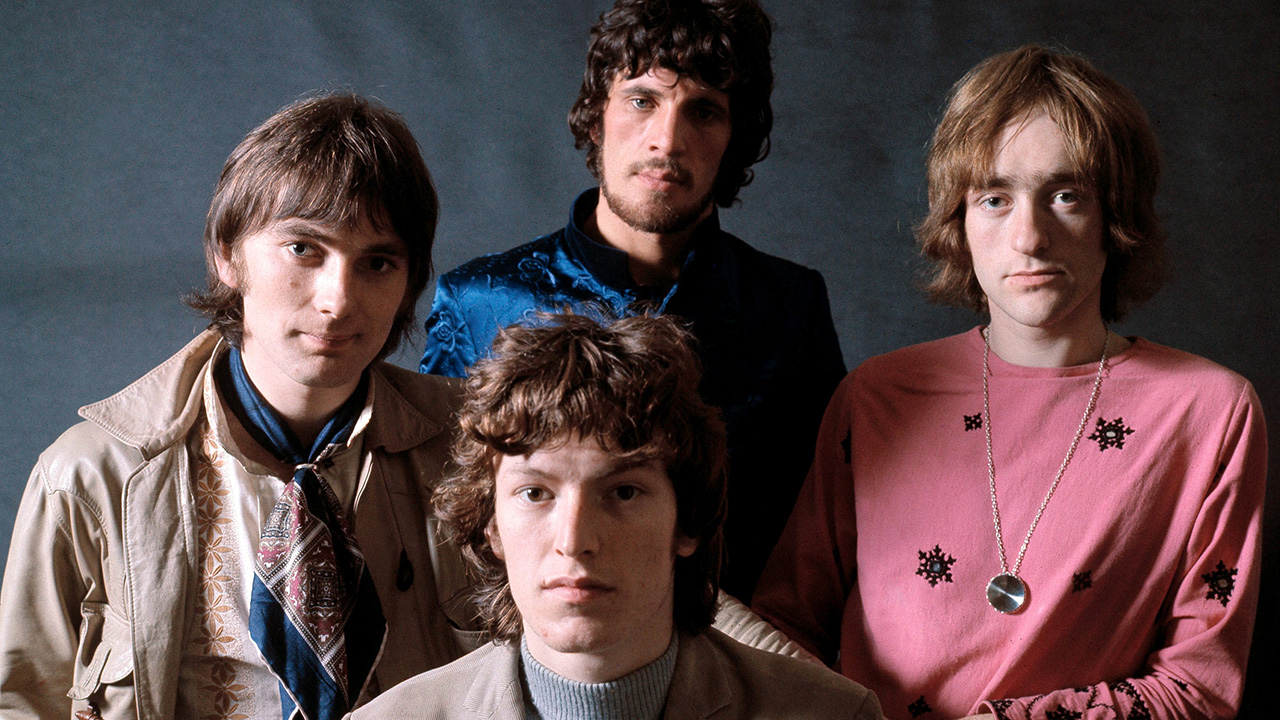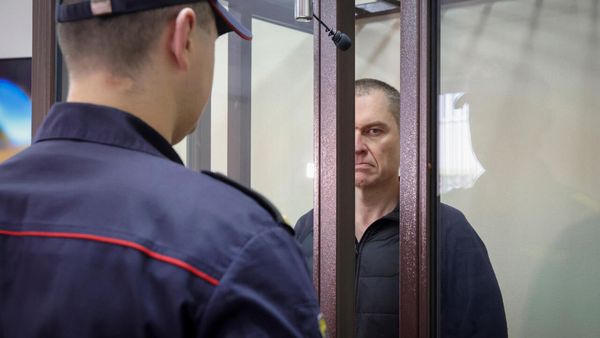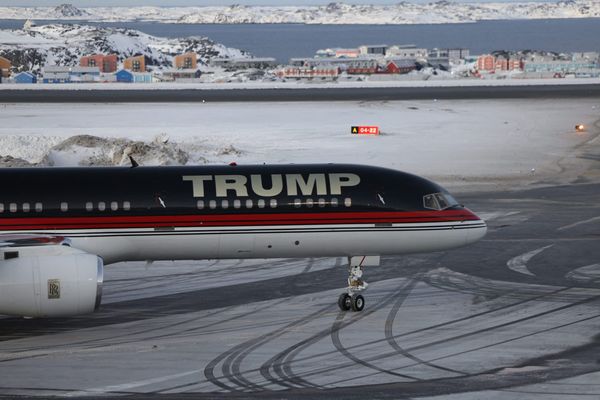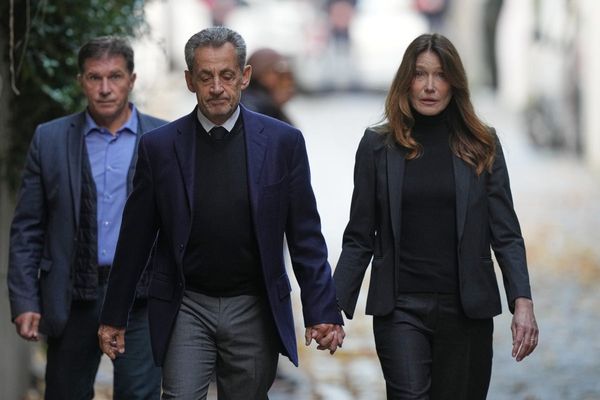
From their faltering, psychedelic beginnings, Traffic finally managed to weave a path through the hedonistic early 70s and create three albums of groundbreakingly original progressive music. Prog told their story in 2018.
One of British progressive music's most adventurous and daring extended bursts of creativity began in 1970, just as spring was whispering its arrival. It was then that Steve Winwood was back at The Cottage, the tumbledown dwelling tucked away among 1,200 acres of rolling Berkshire Downs that had been his sanctuary and also laboratory for the last three whirlwind years.
Winwood had first brought his new band, Traffic, here at the dawning of Britain's Summer of Love in April 1967. Not yet 20, the Birmingham-born Winwood was already by then a veteran of Brummie R&B stompers The Spencer Davis Group: he had joined that band as a mere 14-year-old. On Gimme Some Lovin’, the No.2 smash he co-wrote for them in 1966, and other rollicking sides of theirs, it was entirely possible to mistake the callow teenager’s singing voice for that of Ray Charles, such was its resonant power and the depth of its soul.
Always a restless spirit, Winwood grew tired of pushing against the self-imposed boundaries of the Spencer Davis sound and so threw in his lot with three more questing lads from the Midlands. They were guitarist Dave Mason and drummer Jim Capaldi – both from Worcestershire – and Chris Wood, an art school student and jazz buff from just up the Black Country road in Stourbridge who was self-taught on sax and flute.
Together at The Cottage and over jam sessions that would often go on for whole days, they cooked up a whimsical, lysergic debut album, Mr Fantasy, released at the end of '67. This gave up a second No.2 hit, a novelty sing-song entitled Hole In My Shoe that was penned by Mason and loathed by the other three – Winwood especially.
Ten months later came Traffic, a weightier, more potent brew, but with songs that still largely conformed to the snack-size verse-chorus format of contemporary pop. Once again Winwood yearned for a kind of music more ranging and expansive, something to stretch his exceptional talents.
Dissolving Traffic, he first formed supergroup Blind Faith with Eric Clapton and Ginger Baker. It lasted for a single album of lumbering psych blues and a fractious US tour before falling apart. Shorter still was his next stint as a sideman in Baker’s Air Force, the eruptive drummer’s 10-piece leviathan remaining intact for just a brace of gigs at Birmingham Town Hall and the Royal Albert Hall in January 1970.
It was from the wreckage of that ill-conceived collective that Winwood crawled back to The Cottage. On this occasion he brought along with him his record label Island’s maverick in-house producer, Guy Stevens, and a bunch of ideas gestating for a solo album that he imagined being called Mad Shadows. Working alone with Stevens in the homey living room, rugs on the floor before a roaring fireplace, Winwood managed to concoct a couple of tracks: a stately jam, Every Mother’s Son, and a punchier blues, Stranger To Himself.
Winwood was amazing, but a very quiet, shy kind of guy… he wouldn’t talk to anyone for days on end
Phill Brown
Both flexed Winwood’s musical muscles, but he was nevertheless still dissatisfied, missing the push and pull he got from being surrounded by musicians who were sympathetic to his whims and also able to help translate for him.
“Winwood was amazing, but a very quiet, shy kind of guy,” says Phill Brown, engineer on the Traffic album sessions. “He doesn’t communicate brilliantly and wouldn’t talk to anyone for days on end. It was left to the more voluble band members, Capaldi and Mason, to verbalise everything.”
Finally, Winwood summoned Capaldi and Wood to join him once more. Mason he didn’t bother with, having instigated the guitarist’s dismissal from the ranks not long after they’d completed the second Traffic album. Stevens left too, with Island owner Chris Blackwell subsequently taking personal charge of the sessions, which soon enough evolved into a fully-fledged Traffic reunion. Winwood made just one stipulation: he would now be the undisputed leader of the band.
With the extravagant Capaldi cheerleading, and fragile, mystical Wood bringing with him a traditional English folk tune called John Barleycorn – which he’d heard on Frost And Fire, a 1965 album by Hull folkies The Watersons – the stage was set for Traffic to at last become the band Winwood had wanted all along: one capable of harnessing a dizzying array of musical styles and then make them over into a fresh, original form that ebbed, flowed and soared.
The John Barleycorn Must Die album was the first, giant step along that path. From there they conjured three more records that marked them out as prodigious explorers and rare virtuosos. Yet it also extracted a heavy price from the three principals – it could be said that not one of them was ever the same again.
Chris Wood’s playing came straight from his soul. That was just what it sounded like sometimes too – the grinding of his soul
Gordon Jackson
As the 70s opened, the sound of folk rock had been blown across the Atlantic in the gusts made by The Band’s first two albums, the Byrds’ Gram Parsons-enhanced Sweetheart Of The Rodeo, and Bob Dylan’s rustic-hued one-two of John Wesley Harding and Nashville Skyline.
A few months before Winwood, Capaldi and Wood had got their act together again, the home-grown Sandy Denny-fronted Fairport Convention had picked up the baton on their transformative Liege & Lief album. Traffic took in the spirit, but as a starting point rather than the ultimate destination.
Taking shape over three freewheeling months, initially at The Cottage and then under Blackwell’s guiding hand at both Island’s Basing Street and Olympic studios in London, Traffic preferring to record by candlelight, since John Barleycorn Must Die had at its base a bucolic mood. However, from there it vaulted to a more celestial sphere.
Take just one of its standout cuts, Freedom Rider. Essentially a languid, woozy, countrified lament, it gets caught up in the slipstream of Winwood’s pulsating Hammond, and from there hurries off on the flurries of Wood’s spiralling sax and flute to a distant, less distinct but more evocative horizon.
“I always thought the trio was the best of Traffic,” says Gordon Jackson, longtime friend, fellow musician and sometime roadie to the band. “Chris in particular really came alive. There’s nobody could say that he was the best flute or sax player technically, but his invention on those instruments was simply tremendous. His playing came straight from his soul. That was just what it sounded like sometimes too – the grinding of his soul.
“We called Jim ‘The Gypsy’ and he was of that nature. There was a bit of Romany in his attitudes and he was a traveller in many ways. He was the band’s lyricist, of course – more a poet, shall we say. And every time Steve put his fingers to a guitar or piano, or opened his mouth to sing, something came out that transcended the normal. He has his failings as a person, but I guess you can’t have everything.”
Much later described by Winwood himself as “perhaps the definitive Traffic album,” John Barleycorn Must Die was released that July to effusive reviews and strong sales. To begin with they toured it as a three-piece, Winwood’s organ filling out the holes in their live sound and Capaldi and Wood playing at the top of their games. Then tragedy struck: early the following year, Capaldi lost his newborn son to a cot death. Shattered, he stopped playing drums and offered to step down from the band.
Winwood refused, and instead brought in two bodies to cover for his stricken comrade: Ghanaian percussionist ‘Rebop’ Kwaku Baah, a fellow survivor of Baker’s Air Force; and American drummer Jim Gordon, who had done sessions for The Beach Boys, The Byrds and George Harrison, and who had not long jumped ship from Clapton’s beached Derek And The Dominoes.
That line-up retired to Basing Street to make a new Traffic album, the defining point of which would be its 11-minute-plus title track. The Low Spark Of High Heeled Boys rose up from a lyric Capaldi roused himself to write about the withering effects of the music business on the artist. Winwood created a musical backdrop that moved like shifting sand: neither solely rock, blues or jazz, but each and more besides, changing almost from one bar to the next.
Altogether, and elsewhere on this, Traffic’s most restless record, shades and styles were jumbled up in the same pot, shaken into new shapes, then broken down and started up again. “It kind of sums up Traffic in a way,” Capaldi said at the time. “The eclectic- ness – you can’t put your finger on it at all, yet you know it’s familiar.”
Members were partying… there was a lot of smack and really scuzzy groupies around. It was ugly
Richard Feld
In advance of the album’s release, Winwood marshalled another unexpected detour. At the same time as adding erstwhile Blind Faith bassist Ric Grech to the live ensemble, he re-recruited Mason for a spurt of six UK dates that yielded a so-so live album, Welcome To The Canteen, credited to the individual members rather than to Traffic. Another blink and Mason was gone again.
The Low Spark... was flying up the US charts and Traffic were blazing a trail across a troubled nation in the third year of Richard Nixon’s presidency. Aptly, perhaps, something rotten was also festering at the band’s core. “Back at the hotels, members were partying and it was always Grech and Gordon,” soundman Richard Feld told writer Dan Ropek in 2016. “There was a lot of smack, and really scuzzy groupies around. It was ugly.”
Directly after the final date of the US tour in Minneapolis-St Paul, Winwood fired the errant rhythm section. Grech died of renal failure in 1990. In 1983, Jim Gordon murdered his 72-year-old mother, beating her with a hammer before fatally stabbing her with a butcher’s knife. He was diagnosed as schizophrenic, and died in a California psychiatric prison in 2023. Nor was the malaise confined to the support players: Chris Wood had started a long, painful slide into alcoholism. Weary of the chaos, Winwood once again considered breaking up Traffic.
In the midst of his deliberations and at Blackwell’s urging, Capaldi went off to Alabama to make a solo album with the crack Muscle Shoals studio players. He returned raving to Winwood about the dexterity and adaptability of the musicians. It was enough to compel Winwood to hire one half of the Muscle Shoals’ rhythm engine, bassist David Hood and drummer Roger Hawkins, to bolster Traffic for another swing around the States.
The tour kicked off in New Haven, Connecticut during the first week of February 1972, before a packed auditorium on the Yale University campus. But the meeting of British rock aristocracy and the disciplined, relatively conservative Muscle Shoals duo was not without its teething troubles.
There’s maybe 8,000 people in the house, and with the lighting and everything, we couldn’t read our chord charts… I thought I’d been thrown into a psychedelic nightmare.
David Hood
“Roger and I had never played a big concert before then,” explains Hood. “When we were starting out, we did fraternity parties and school dances, and then we got to be so busy in the studio business. That first night, we go out there, there’s maybe 8,000 people in the house, and with the lighting and everything, we couldn’t read our chord charts. We were just flying blind and it was so loud we couldn’t hear too well either. It was crazy. I thought I’d been thrown into a psychedelic nightmare.
“The Traffic guys would get pretty fucked up. Winwood, I think, only on hash or marijuana, but Chris Wood was doing a lot of alcohol and all kinds of drugs; Rebop too. Capaldi, I would say, was more of a speed freak. He would just jump around and do crazy stuff. The daily itinerary would say, ‘Be in the lobby for 8am to leave for the plane.’ Roger and I would be down 10 minutes ahead of time, sat there with all of our stuff, neat and combed. After a while, the Traffic guys would drag themselves down, one at a time. Sometimes Chris or Rebop would even have to be carried through.”
As the tour progressed, this transatlantic Traffic melded together – but its foundations remained shaky. Winwood was struck down with a painful abdominal condition; and on his return to England, he was rushed to hospital with a burst appendix. It took months for him to recover, but by the autumn of 1972 he had gathered Capaldi and Wood at his pile in the Cotswolds to prepare new songs.
From there, they flew out to Muscle Shoals to cut the next Traffic studio album with Hood, Hawkins and Hammond player Barry Beckett. Shoot Out At The Fantasy Factory was put down quickly, Winwood producing and at a rate of one track per day between December 11 and 17. While standard practise for the Muscle Shoals men, such production-line efficiency was at odds with Traffic’s more typical approach for taking the scenic route to making records, ideas often as not bubbling up from their extended jams.
“Nobody worked like we did,” claims Hood. “We would play a song one time off the chart and then we’d got it, and I’m sure they were amazed at that. All of those songs were first or second takes, which was just our normal thing. To us, time is money.”
I was let down because I was enjoying being on the stage, travelling all over and flying first class.… you get used to those kinds of things
David Hood
For sure it was a culture clash; but when the two parties gelled, the results were spectacular, Traffic’s liquid grooves sliding over, or else slipping in between the vice-tight Muscle Shoals swing. The problem was – the excellent Evening Blue aside – it only happened during tantalising parts of the other four songs. The album as a whole flickered yet didn’t sparkle.
Not that it didn’t sell, especially in America. On the US tour to back it up, such was their dazzling interplay that Traffic could draw the breath from the most cavernous room. That much was captured on the subsequent double live album that Blackwell ordered up from the European leg. On The Road was sprawling, but also intermittently stunning. At times touching at a kind of musical perfection, Traffic might even have been too good to last. Certainly, Winwood eventually had enough of flying quite so close to the sun.
“Playing in that band was great, even if a little overwhelming,” says Hood. “I also think it ended up becoming something other than Traffic started out to be. It got to be where we would play everything a certain way, every time; and that was something that started to bug Winwood a little bit, though he never complained.
“After the tour was over, in January ’74, he sent the three of us a letter. It was very nice and complimentary, but he said that he felt that it had just gotten to be too big and that it was time to go back to their original idea. I have to say I was let down because I was enjoying being on the stage, travelling all over and flying first class. After a while, you get used to those kinds of things.”
Though they didn’t know it at the time, the back-to-basics album that Winwood, Capaldi and Wood proceeded to make was to be their valediction. Reconvening at Winwood’s home and in his stable-sized ‘garage studio’ toward the end of 1973, with Blackwell back as overseer, they rustled up seven pastoral-sounding songs that harked back to The Cottage days. As a whole, When The Eagle Flies was a slighter, less substantial work than either of John Barleycorn Must Die or The Low Spark..., but it had its own easy charm.
I was on a treadmill and there was no way of getting off. I just had to say, ‘That’s it with Traffic’
Steve Winwood
Even before the album was released, Traffic went back on the road with a vengeance, augmented once more by Baah and also new bassist Rosko Gee. Between February and May 1974, they played 40 dates around the UK and Europe, hitting a stride. The stumble and fall came later that summer when the tour arrived in America. Since they shared a fear of flying, Winwood and Wood elected to cross the Atlantic on board the QE2. Winwood had also arranged to have a Rolls-Royce Silver Cloud shipped over so he could drive himself between gigs, cocooned off from the rest of the world – and from his bandmates too.
At New York’s Academy of Music on September 18, the fifth day of the tour, Traffic unravelled. Wood took to the stage for the early show appearing unsteady on his feet, and played like a man lost in a fog. Winwood tried to cover the cracks by playing over him, but it was like applying a Band Aid to an open wound. The ailing Wood was so incapacitated he didn’t even make the late show. During the rest of the tour he wore the look of a hunted man, and his performances were just as indistinct. Attendances at the shows were erratic, as if people had been warned off by an ill wind.
“It was always obvious that the fame didn’t sit with Chris like it did with the other two,” reasons Steph Wood, his sister. “Steve was Mister Cool and Jim the showman, but Chris was I think a bit of a fish out of water.”
After an uneven show in Chicago on October 27, Winwood complained of having stomach pains again. The next day, he climbed into his Rolls-Royce, said goodbye to the others, and drove off. The others assumed he was on route to their next date in Knoxville, Tennessee, but in fact he was bound for home; and Traffic’s race was run.
“I’d had enough of album, tour, album, tour,” Winwood told Rolling Stone in 1988. “I was on a treadmill and there was no way of getting off. I just had to say, ‘That’s it with Traffic’ – no way I could do it any more.”
“Steve completely withdrew,” says Phill Brown. “That was just burnout. When I got back together with him in 1976 to do his first solo album, he wore a duffel coat with the hood up when we were recording, and had his Hammond set up so he was looking at the wall. I think he had been through two or three years of fairly hard times.”
Winwood recovered his bearings and went on to make a string of successful solo albums; though only 1977’s self-titled set and 1980’s Arc Of A Diver managed to trace echoes of former glories. Capaldi too would go on making solo records, four of them at Muscle Shoals.
Traffic took originality to some phenomenally obscure places… We wanted to create a form of music that people would recognise as Traffic music
Steve Winwood
Wood never did get back on his feet. He died from pneumonia on July 12, 1983, aged 39, by which point he was living back with his parents. Seven months before that, Baah, Wood’s junior by a single year, had been taken by a brain haemorrhage.
In 1994, Winwood and Capaldi regrouped as Traffic for one more solid album, Far From Home, and a tour. In 2004, the band were inaugurated into the Rock And Roll Hall Of Fame. The following year, stomach cancer claimed Capaldi. Winwood still carries the torch, though there are murmurings that he’s considering his retirement.
These days, he’s wont to claim that he can barely recall his vanished youth. Yet looking back in 1988, he was able to sum up his band’s singular journey through those four years. “Traffic took originality to some phenomenally obscure places,” he reasoned. “What we wanted to do was create something that was completely our own. We wanted to create a form of music that people would recognise as Traffic music. And we did some weird and wonderful stuff.”







